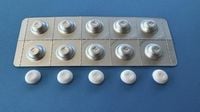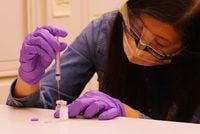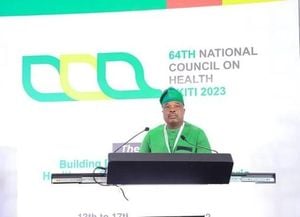Once the emblem of 1960s counterculture and a symbol of rebellion, LSD is now making headlines for a very different reason. New research published on September 4, 2025, in the Journal of the American Medical Association (JAMA) suggests that a single dose of MM120—a pharmaceutical formulation of lysergic acid diethylamide (LSD)—could offer lasting relief for people suffering from generalized anxiety disorder (GAD). For a drug that’s spent decades in legal and cultural exile, this is nothing short of a medical renaissance.
The phase 2b trial, led by Dr. Maurizio Fava of Mass General Brigham and Harvard Medical School, enrolled 198 adults with moderate to severe anxiety across 22 sites in the United States. Participants were randomly assigned to receive one of four doses of MM120 (25, 50, 100, or 200 micrograms) or a placebo. Their symptoms were tracked for 12 weeks using the well-established Hamilton Anxiety Rating Scale (HAM-A), with no accompanying psychotherapy or talk therapy—a departure from many earlier psychedelic studies that paired drugs with extensive counseling.
According to ABC News, the strongest improvements appeared in the 100 and 200 microgram groups, where patients improved by about five to six points more than those on placebo. At four weeks, the 100-microgram dose emerged as the optimal balance of efficacy and tolerability. By the 12-week mark, 65% of participants in this group continued to show benefits, and nearly half were considered in remission. Dr. Fava, who also serves as an advisor to MindMed (the company behind MM120), highlighted the significance: “All the treatments we currently have for generalized anxiety require daily medication, which means daily side effects. Here, we see a single administration with side effects largely limited to the day of dosing, followed by benefits that last for weeks.”
Side effects, while present, were mostly mild to moderate and short-lived. Nearly all participants at the 200-microgram dose reported perceptual changes—visual distortions or brief hallucinations—along with some nausea and headaches. Serious adverse events were rare. Dr. Harriet De Wit of the University of Chicago, who praised the study’s rigor, remarked: “All 40 people assigned to the 200-microgram dose reported perceptual changes. That may be part of the therapeutic effect—we don’t know. But it wasn’t necessarily an adverse effect.”
The study’s design intentionally excluded psychotherapy, a choice that sets it apart from previous psychedelic research. As The Times of India observed, this bold and minimalistic approach sought to test the drug’s power on its own. Dr. De Wit noted, “What’s most remarkable about this study is that it did not involve any significant psychotherapy. That suggests the drug itself has long-lasting anti-anxiety effects.” This is particularly relevant, as earlier FDA reviews of psychedelic-assisted therapy—like those for MDMA—criticized the difficulty of separating the benefits of the drug from those of therapy.
Of course, the trial wasn’t without its limitations. Most participants could correctly guess whether they had received LSD or a placebo, undermining the “blinded” nature that’s considered crucial in clinical research. Some also dropped out early, narrowing the final data set. Frederick Barrett, director of the Johns Hopkins University psychedelic center (not involved in the study), commented to the Associated Press: “I see this paper as a clear step in the direction of reviving that old research, applying our modern standards and determining what are the real costs and benefits of these compounds.” He also cautioned that powerful subjective experiences can sometimes require therapeutic support to process.
Despite these caveats, the results are striking. According to HCPLive, participants receiving 100 micrograms of MM120 saw a 7.6-point greater reduction in HAM-A scores compared to placebo at week four. Clinical response and remission rates were 65% and 48%, respectively, and the benefits extended to improved depression scores, functional disability, and overall quality of life. The rapid onset of action—sometimes as early as two days after dosing—adds to the drug’s appeal.
The safety profile, while largely reassuring, does raise practical concerns. LSD’s effects can last eight to twelve hours, making at-home use risky. Dr. Fava emphasized, “For safety reasons, I feel very strongly that drugs with psychedelic properties should be administered in a healthcare clinic, not at home.” This echoes a broader consensus among researchers that medical supervision is essential, at least until more is known about the drug’s effects in broader, less carefully screened populations.
LSD’s journey from outlawed party drug to potential medical breakthrough has been long and winding. In the 1950s and 1960s, more than a thousand papers explored its therapeutic potential, but a federal crackdown in 1970 classified LSD as a Schedule 1 drug, effectively halting research. It wasn’t until the 1980s and 1990s that interest in psychedelics began to resurface, initially focusing on substances like MDMA and psilocybin to sidestep LSD’s cultural baggage. As Dr. Fava told AP, “LSD was right there in front of everybody, but MindMed is the first company that actually decided to evaluate it.”
Interest in psychedelic therapies has been growing steadily, with the FDA designating LSD as a potential “breakthrough” therapy for anxiety. High-profile figures, including Health Secretary Robert F. Kennedy Jr., have expressed support for fast-tracking these treatments—especially for veterans and others with conditions that resist conventional therapies. According to the National Institutes of Health, GAD affects nearly 3% of U.S. adults, and about half of patients fail to respond to current first-line treatments like antidepressants and benzodiazepines. No new medication for GAD has been approved in the U.S. since 2007, leaving a significant unmet need.
MindMed is already moving forward with two large, late-stage phase 3 trials to further evaluate MM120’s efficacy and safety. The company hopes that, if these studies are successful, it can seek FDA approval and bring LSD-based therapy to clinics nationwide. Daniel Karlin, MD, MindMed’s chief medical officer, said, “Our Phase 2b results—marking the first well-controlled clinical study to evaluate dose-response relationships of LSD in a psychiatric population—demonstrate the meaningful impact of a single 100 μg dose of MM120 in significantly reducing anxiety symptoms.”
Experts remain cautiously optimistic. As Dr. De Wit put it, “It’s very impressive that a single administration had effects lasting eight or even 12 weeks. But these participants were carefully screened. We need to know how safe it is in broader populations.” The next round of research will need to address questions about long-term safety, optimal dosing schedules, and how best to integrate psychedelic medicines into mainstream psychiatric care.
The results so far, though, suggest that LSD may finally be poised to shed its countercultural past and step into the medical mainstream. For those living with anxiety that resists other treatments, the promise of lasting relief from a single dose offers hope—and a hint of the paradigm shift that may be just around the corner.






